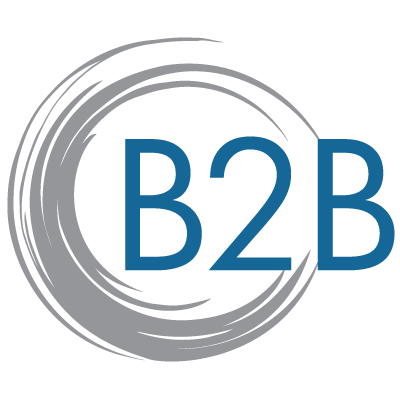
by gabriel_sales | Mar 18, 2014
 In B2B sales, we all know by now that we need to incorporate digital content into our sales processes. As a recent blog put it, “content is the fuel to our sales and marketing engine.”
In B2B sales, we all know by now that we need to incorporate digital content into our sales processes. As a recent blog put it, “content is the fuel to our sales and marketing engine.”
While content has many functions along the sales process, from lead gen to nurturing to SEO, etc., its greatest value is in helping move deals through the sales pipe to close.
In order for your content to help take buyers through the first stages of their buying journey, you need content that gets your name to the top of Google SERPs, educational content to help buyers understand your space and solution, and content that gently reminds not-yet-ready-to-buy leads of your value prop.
But to complete the journey, you need content that gives ready-to-buy prospects reasons to keep moving the deal forward.
From our experience running hundreds of outsourced sales and marketing campaigns for our clients, the three types of content we have found to be most effective in getting leads to ‘take the next step’ are:
- Checklists/Requirement Sheets
Many times in the early stages B2B content sales, prospects no close to nothing about your space or solution. Management consulting services and enterprise software solutions aren’t like iPods or toilet paper, where the general requirements are well known and risks of making the wrong decision are low. Because B2B sales are more abstract/technical and higher risk than other sales, B2B content buyers sometimes need help shopping.
Checklists and/or requirement sheets can therefore be very valuable to buyers who have never made a purchase decision in your space before. For example, in a B2B content software sale, you could offer a checklist titled, “10 Critical Features to Look for in a XYZ Software Solution” This type of content helps prospects who are nervous about buying feel more confident that your product/service will meet their needs, and they are making the most informed decision possible.
For more on B2B content continue reading the rest of this post, click here.
by gabriel_sales | Mar 7, 2014

On the plains of Africa in the early days of humanity, there was no such thing as big data. We didn’t have numbers and statistics to help us determine what to do and what not to do. So, how did we learn, store and retain information about the world around us?
We used stories.
It was a story, rather than a statistic, that let us know that ‘this plant is poisonous’ and ‘that tiger will kill you’. While the world around us has changed dramatically since the time of tribal storytellers, humans still love to listen to and tell each other stories to inform, entertain and persuade.
Advertisers learned a long time ago that stories could be used as a tactic to influence buying behavior. In today’s digital marketplace where buyers are constantly bombarded with statistics and pushy sales messages, storytelling is one strategy that can help you stand out and close business.
Here are three easy ways to incorporate some basic storytelling into your content marketing strategy:
1. Plot structure
Most of us remember from elementary school that stories generally follow this structure: exposition, rising action, climax, falling action and denouement. Many of today’s great advertisements, including this year’s most popular Super Bowl Ad, also follow the classic storytelling structure.
By using this structure as the basis for your marketing content like blogs, white papers, webcasts, videos, testimonials, etc., your readers will be much more engaged with your brand. Telling a consistent story across different media channels also helps to create the trust required for closing in complex solution sales.
2. Characters
The fact that you likely know who ‘Flo’ is and what ‘the Allstate guy’ sounds like are evidence of the effectiveness of using characters in your sales and marketing messages. While it might not make sense for your business to feature a fictional character in your content marketing, you can still use voice and tone to humanize your content and give it some personality.
Another way to install characters in your marketing content is by telling your customers’ story in a creative way like Sprint did recently in a series of commercials. If you are able to tell a story where your customer is the hero, this can persuade prospects in the midst of a buying decision that they too could be a hero by making a purchase.
3. The ‘hook’
We all know the feeling of finishing a chapter in a novel or an episode in a television series—we are immensely invested in the story, then something dramatic happens and we are left with a cliffhanger. By intentionally not leaving everything on the table, you can use stories to create desire to know what happens next.
In B2B sales, creating an exciting and motivating hook is a bit more difficult, but it can be done. In a blog or video series, use the plot structure above and build some action with a few characters. Then, leave your readers hanging right before the climax and tell them when and where they can come back to find out what happens next.
For more on leveraging storytelling in your marketing content, read B2B Customers & Brands: Why Emotional Connection Matters. Feel free to contact us with any questions.
by Glen Springer | Feb 26, 2014
 As a salesperson, knowing who to call and having the ability to control the conversation are key to the outcome of a call. This is where a well-run marketing automation system, content management system and lead scoring system pays off for a sales person.
As a salesperson, knowing who to call and having the ability to control the conversation are key to the outcome of a call. This is where a well-run marketing automation system, content management system and lead scoring system pays off for a sales person.
In a retail setting, it takes a keen eye and well developed senses on behalf of a salesperson to understand what customers are there to buy and who is there ‘just shopping’. The best salespeople seem to have a third eye telling them whom to approach and what tactic to use. In Malcom Gladwell’s book, The Tipping Point, he explains that these superior salesmen know that “nonverbal cues are as or more important than verbal cues” and, “subtle circumstances surrounding how we say things may matter more than what we say.”
People who are able to sell based on subtle cues are really just good at picking up buying signals early. Most salespeople just go from person to person asking, “Can I help you?”—this essentially equates to cold calling. When your organization relies on an inside sales team, you need to be like Gladwell’s superior salesperson, not an average ‘greeter’.
But, how do you do this over the phone when you can’t really interact with customers in a way that allows you to pick up all their subtle buying signals?
This has always been a problem with phone sales and cold calling. Salespeople are left wondering:
- Who’s actually interested?
- What are they interested in?
- What features are they most interested in?
- When should I call them back?
- How do I know if they really want to talk to me?
So, how do you find the answers to these questions with limited visibility?
Answer:
You see what your prospects are doing via your marketing automation system. Marketing automation gives you the ability to know who to call, which is probably the biggest success factor on a sales floor—it is what separates the best from the bunch. Marketing automation also gives you insight into when they want to hear from you, what they want to talk about, what you should share, what you shouldn’t share, etc. With a marketing automation platform, you have the information at hand to gain the respect of the prospect and have a real conversation, rather than a cold call and hearing, “No thanks, I’m just looking” or “ Who are you?” or “What is this about?”.
Another trick of great salespeople involves resources and control. Most successful sales reps know when to move on from a prospect that is not going to transact, allowing them to control when the conversation ends rather than wasting their time educating. Marketing automation can also help automate this often times tough skill by giving you the ability to see if your prospect is opening and sharing content or if he or she is just blowing smoke and is not really ready to transact.
For more on using marketing automation for sales, read “A Twist on Selecting a Marketing Automation Platform.” Feel free to contact us with any questions.

by gabriel_sales | Sep 9, 2013
How B2b marketing leads to more profitable outcomes
As a sales and marketing outsourcing company with over 13 years of experience, we have executed countless email marketing campaigns for both ourselves and our clients. During those years, we have learned what works and what doesn’t in terms of B2B lead generation and conversion.
Here are 3 tips to improve your email lead generation:
- Offer value and make it highly visible.
The key to using email to turn prospects into leads is offering value. For B2B products and services, the value offered is usually some form of content. This is known as email content marketing. The content you send can vary greatly, but should generally be educational in tone. You can send short blog articles, important industry news, webinar invitations, video links, industry reports, white papers, etc. By sending your prospects content that has some type of value for them, they start to think of you as an expert in your field and will eventually turn to you when they are ready to make a purchase.
When offering value in your B2B marketing emails, make sure it is the focal point of the entire message. People love getting gifts, and that is essentially what you are doing by offering your content. Make this obvious, and your prospects will thank you in the form of conversion.
2. Think about how emails are viewed.
Think about your own inbox. It is likely that when you open many of your emails, a notice appears telling you the certain images have been blocked. Most email applications (including Outlook) now have the default setting to not display images, so you need to think about this when crafting your marketing emails. Make sure any information that is critical does not appear exclusively in an image.
It is also helpful to think about the display window you view your emails in. For most of us, we view our emails in a preview window, and therefore only see a small portion of the message at a time. Many people only scan the first line of an email before deciding whether or not to delete it, and if your prospect does not see anything of value immediately, you might end up in the trash. Make sure that the value you are offering in your email (whether it is an announcement about a sale, an educational webcast, a new blog post, etc.) is immediately obvious and is visible within the small preview frame of most email applications.
3. Analyze and refine constantly.
Once you have created your email for lead generation, make sure it stands out. Open it up and compare it side by side with your competitors’ emails that have similar goals or calls to action. Are your graphics sharp enough or do they look dated in comparison? Is your overall messaging aligned with theirs? Is your differentiator clear and immediately obvious? What is it about your email that makes it better than all of the others? If you don’t know, it is time to back to the drawing board.
If you would like more information on email lead generation or using email for B2B marketing, click here. If you would like to know more about content marketing in relation to the new rules of buying and selling in the digital era, you can download our white paper here.
If you have any questions, please feel free to contact us.
by gabriel_sales | Jul 15, 2013
 “You need to post on Facebook at least twice a day.”
“You need to post on Facebook at least twice a day.”
“If you aren’t blogging weekly, your SEO will slip.”
“You should be holding webinars once or twice a month.”
“You need to offer a new white paper every quarter.”
If you do a Google search for B2B marketing content development, you’ll likely find tips like the ones above. As a startup company or a company with a small staff, keeping up with all of the different types of marketing content you need to create can be overwhelming and exhausting.
It may seem like you need a whole staff of copywriters and marketers to keep up with the constant demands of marketing content production. However, we believe if you know how to repurpose B2B marketing content to share across platforms, your workload decreases dramatically.
While none of the above tips are hard and fast rules for marketing today (although they are all good ideas), what they illustrate is the need to consistently reach your prospects in the way they want to be reached. Some people are Facebook addicts while others still love well-written white papers. So you need to offer both, and then some.
The good news is you don’t have to come up with completely new b2b marketing content for each marketing medium. By quickly and easily converting one form of digital marketing into another, you can push the same messaging and content through all of your marketing channels.
Here is an example:
To start, write a white paper. Let’s say the white paper is called “The 10 Things You Need to Succeed in 2013”.
Then, take that white paper and turn it into 10 short blog posts, each one about one of the “things” you need to succeed.
If you are able to produce live video, have one of your senior executives stand in front of a white board and go over each of the 10 points. Then, chop that video into 10 separate videos to post on your YouTube channel.
You can also take your white paper and turn it into a Powerpoint presentation. You can then share the Powerpoint presentation online on places like Slideshare and the ‘presentations’ section of LinkedIn. Using software like Camtasia, you can also turn your slide show presentation into a video to share on YouTube or Wistia.
If you were to do all this, you would have a white paper, 10 blog posts, 10 ‘live-action’ videos, a slideshow presentation and a slideshow video. That amounts to 22 digital content marketing assets to share with your prospects—all coming from a single white paper.
You can then push those 22 assets out over your social media channels (LinkedIn, Facebook, Twitter, Google ) on whatever type of schedule you chose. By varying your messaging in social media posts to highlight different features of each asset, you can tweet or post the same piece of content multiple times.
Hopefully this example has shown you that repurposing b2b marketing content and the mediums to reach prospects does not have to be overwhelming. By leveraging the same messaging or theme throughout multiple digital platforms, you will be able to ensure you can reach your customers in their preferred content-consumption format.
Please feel free to contact us with any questions.
by gabriel_sales | May 16, 2013
 When you think about your personal internet use, it is likely you spend a significant portion of your time watching videos of some kind. People using the internet today are accustomed to being able to consume information through video format, which can be seen by the fact that YouTube now has roughly 4 billion views per day. If your B2B company can present its sales and marketing messages through this platform, you will be ahead of your competitors.
When you think about your personal internet use, it is likely you spend a significant portion of your time watching videos of some kind. People using the internet today are accustomed to being able to consume information through video format, which can be seen by the fact that YouTube now has roughly 4 billion views per day. If your B2B company can present its sales and marketing messages through this platform, you will be ahead of your competitors.
You should start by setting up and YouTube channel for your company, which you can think of as your own television station. Through this station, you can present educational videos on industry trends, demonstrations of how your product or service solves business problems, testimonials from your past clients, short ads about promotional offers, etc.
The key to using video as a marketing strategy is to not to push the sale too hard. Just like on television, deliberately pushy ads can annoy. What you should focus on instead is providing something of value to your viewers. If you can give them something entertaining, or better yet useful, your video will be much more likely to deliver the sales results you desire. Using videos in your B2B digital marketing strategy can help you achieve your sales goals by improving retention (because you can show customers how to use your product/service) and fueling the decision-making process during the customer acquisition phase of the sales cycle.
Because producing and posting online videos is generally cost-effective, this is one area of digital marketing where you stand to gain a lot from a little effort. In the B2B sales world where time equals money, it really does not get much better than that.
For more information on using video marketing for B2B sales, please reach out to us at Gabriel Sales. You can find our contact information here.



 In B2B sales, we all know by now that we need to incorporate digital content into our sales processes. As a recent blog put it, “content is the fuel to our sales and marketing engine.”
In B2B sales, we all know by now that we need to incorporate digital content into our sales processes. As a recent blog put it, “content is the fuel to our sales and marketing engine.”



 “You need to post on Facebook at least twice a day.”
“You need to post on Facebook at least twice a day.”